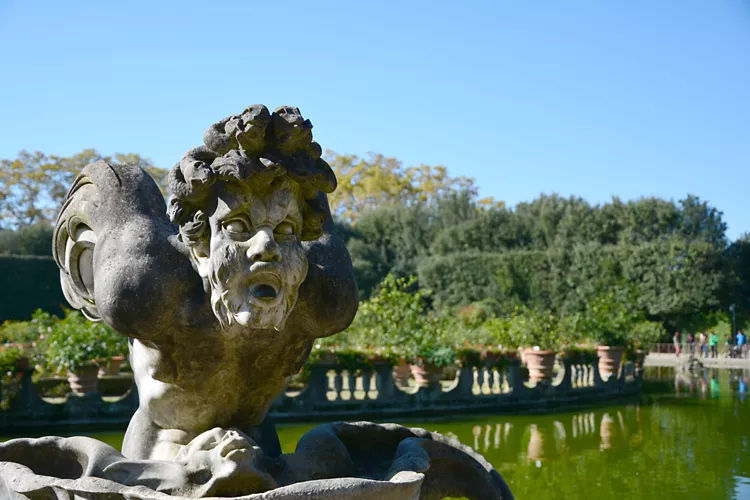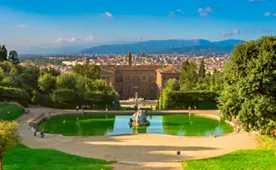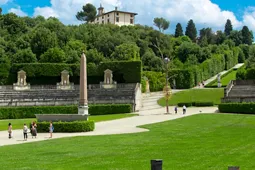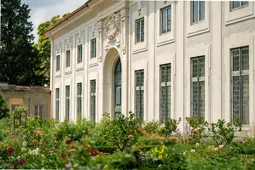



Overview
Boboli Gardens, a botanical museum in the open air.
The Boboli Gardens, a UNESCO World Heritage site since 2013, are located on the hill behind the Pitti Palace and cover about 30 hectares. Today, they are open to the public to enjoy the magnificence of this unique park.
Back under Medici rule, people could not admire this beauty, enshrined behind the walls of the Boboli Gardens. Until the second half of the 18th century, only members of the Medici family had access to it.
The work, which began in 1549, was the result of the skilful hand of architect and sculptor Niccolò Pericoli, known as “Il Tribolo”, one of the greatest exponents of Mannerism, a Renaissance artistic movement that took hold in Italy in the 16th century.
Every corner of this extraordinary space is worth exploring. It would be impossible to list everything you should admire in the Boboli Gardens. However, to help new visitors, here are 5 things you absolutely must not miss.
The Artichoke Fountain and Luxor Obelisk
The first thing you will see when passing through the courtyard of the Pitti Palace to enter the Boboli Gardens is the Artichoke Fountain. Its name is fully justified by its appearance: it is, in fact, an octagonal basin at the centre of which stands a candelabra fountain with a marble shaft decorated with bronze festoons.
You will move on to the Amphitheatre, where it will be impossible not to notice the huge obelisk from Luxor, placed in the park in 1789. Nearby are the Neptune Fountain and the sculpture by Flemish sculptor Giambologna dedicated to Abundance.
The Rococo of the Kaffeehaus
Descending the hill to the northeast, at the height of the Statue of Abundance, you reach the Kaffeehaus, the rococo-style pavilion where an exotic windowed dome is the undisputed star. The German name was decided upon by Grand Duke Peter Leopold of Habsburg-Lorraine, later Emperor Leopold II of the Austro-Hungarian Empire.
The view from the Knight’s Garden
If you are looking for a breathtaking view, the best vantage point is the Knight’s Garden. It stands on the ramparts designed by Michelangelo and to get there you have to climb an imperial staircase where you will encounter two statues by Giovanni Battista Caccini depicting Flora and Jupiter. Here, Giambologna has again left his mark with The Fountain of the Monkeys, recognisable by the three bronze monkeys at the base.
The Lemon House, once a shelter for exotic animals
In the time of Cosimo III, what is now a lemon house was a menagerie for exotic animals, those that the penultimate Grand Duke of Tuscany so loved to buy. Today, the structure, which maintains a mild temperature and dry microclimate inside thanks to its dirt floor, houses dozens of lemon plants in large terracotta pots.
Many of the plants within it are said to be ancient; some swear that they were cultivated by the Medici and have survived the passage of time.
Done with your visit? Don’t forget to plan the next one: The Neptune Basin, The Garden of Madama, The Garden of Jupiter and much more is still there to see.